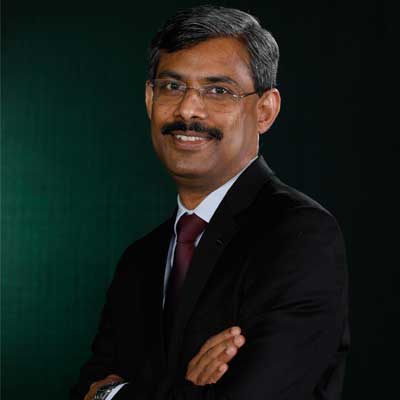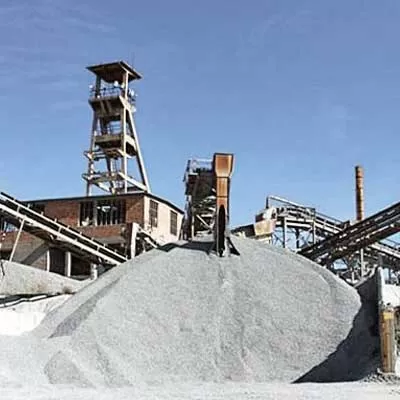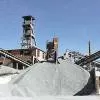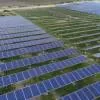A product is often valued for its versatility and ability to lend itself to diverse applications. Saint-Gobain's genesis dates back to 1665 when King Louis XIV of France commissioned it to make glass for the Hall of Mirrors at the Palace of Versailles. Since then, there has been no looking back for one of the world's largest manufacturers of glass, among several lines of businesses. With a presence in 70 countries, Saint-Gobain's journey in India began in 1996 and continues successfully, with the company gaining leadership position in all its major businesses.Saint-Gobain’s glass operations were initiated in India in 2000 with the commissioning of its first float glass plant in Sriperumbudur, Tamil Nadu. Housed in a 177-acre campus, the World Glass Complex is one of the biggest investments by the group in a single location. Along with its other plants in Jhagadia, Gujarat, and Bhiwadi, Rajasthan, the glass business has made Saint-Gobain a market leader, pioneering innovations across products, marketing, manufacturing, applications and human resources.Today, glass is a material considered for value addition and more than just a commodity. Unnikrishnan AR, Managing Director-Glass Business, Saint-Gobain India, who has also been the chair representing various forums in sustainability and regulations drafting key policy structure frameworks for the Indian construction industry, speaks about sustainability, the company’s initiatives and more, in conversation with SERAPHINA D’SOUZA.Green building certifications emphasise the need to maintain energy-efficiency, thermal comfort and sufficient natural daylight in buildings. How are these ensured through the solutions you offer?Sustainability is reflected at different stages of a building's life-cycle. Let us start with the construction phase first. The green buildings we are talking about are typically high-rises wherein the glass chosen makes them much lighter, by around 20 per cent. So, effectively 20 per cent less material is used to construct the same kind of buildings. Also, with glass, construction is faster and therefore, almost 50 per cent of the time is saved in constructing a 15-20 storey building with glass compared to traditional brick and mortar. Moreover, lesser the time taken, lesser is the energy used on construction. We have extraordinarily high energy-efficient products that offer enough natural daylight and cut out unwanted heat (infrared/UV), which keep the building cool. Hence, one doesn't need to spend an enormous amount of energy to cool the building.Nowadays, we have advanced magnetron coatings of multiple layers on glass. In fact, some of our products have 17-18 layers of coating in nanometres. We have really advanced the capability to manufacture these products in India and we are constantly upgrading them. This is being made possible, thanks to our investment in R&D with Saint-Gobain Research India (SGRI) located at the IIT-Madras Research Park in Chennai, one of our eight global R&D centres. This has enabled us to roll out 8 to 10 new products every year. We are also mindful of the fact that all these products need to be within the purview of Environment Product Declaration (EPD). To ensure this, a life-cycle analysis is judiciously done on each product for it to be aligned with the greater objective of sustainability.The other major advantage is from a people point of view. In terms of wellbeing and comfort inside the building, you should avoid volatile organic compounds (VOC) in building materials that may be harmful for health. With glass, you have zero VOC. Besides, USGBC studies indicate that people’s productivity and the feeling of comfort and wellbeing are significantly enhanced when you have a place in the building that connects you to the exterior.Safety, security and fire-resistance are other concerns. How are these addressed through your solutions, while ensuring aesthetically pleasing glass structures?In India, glass is still new; it is being used extensively only for the past 20 years. We first worked on creating awareness among designers and architects for good standards and regulations. One, we formed the Glass Academy, which is a virtual platform to educate designers and larger stakeholders on what kind of glass to choose, how to design buildings, how to make glass safer and so on. Second, we have worked closely with the Bureau of Indian Standards (BIS) on developing standards and codes for applications of glass focusing on safety and security, which are now included in the National Building Code (NBC). The next step for us was to develop the ecosystem in terms of the processing, toughening, and lamination. We formed a technical team to build the capability for this ecosystem in the country.However, when it comes to fire safety, it is a completely different ball-game because of the different temperatures of fire. Normal toughened glass can withstand just a few seconds of fire; it will just break. Fire-rated glass can keep the flame and the smoke on the other side; often, people die, not because of the fire, but the smoke. Since 2012, we have been manufacturing products that offer a good barrier, are unbreakable and keep the fire and smoke on the other side. In the case of fire safety, the glass alone is not enough; the whole system has to function. This is what we provide and it is tested and certified. We also have bulletproof, anti-ballistic, anti-vandal glass, which we manufacture and sell in India. We also export to a large number of countries in the Middle East as well as Australia, Europe and other places.You are a member of the Executive Council of the Alliance for an Energy Efficient Economy. What technologies in glass manufacturing can help ensure energy-efficiency and save resources?On the manufacturing side, we have taken several steps to improve energy-efficiency, the first being designing our own furnaces. Our last furnace was built in 2018, which is probably around 20-30 per cent more energy-efficient than the one built previously. Therefore, there is significant improvement in the melting of raw materials and making of glass. Second, we have integrated the industry 4.0 technologies. We have sensors and smart meters in the plant for real-time measurement of power consumption. So, we are conserving energy while producing glass. The third is using more renewable sources of energy. In our three manufacturing sites, we have almost 10 mw of rooftop solar in our own premises. Energy-efficiency is also connected to the way we consume water. We have extensive rainwater harvesting facilities in each of our sites. In our Chennai plant, we have around 144 million litre of rainwater harvesting capacity. This takes into account multiple rounds of usage; for around 8-10 months it is sustained from rainwater.Please share any recent innovations to ensure high performance and value in your solutions. And what is your investment in R&D like?Both globally and in India, we put a significant investment in R&D, about 4-5 per cent of turnover. Today, SGRI at the IIT-Madras Research Park – one of our eight global centres – has over 100 PhDs working there. So one of the biggest investments is the human capital working on R&D. This centre has produced around 80 patents in the past few years. In terms of new innovations, we have products that are letting in more light and significantly less heat. We call it the selectivity ratio. Other advanced products introduced include electrochromic glass, that can dynamically tint itself depending on the sun’s movement. Capable of getting integrated with AI, it can even get connected to Alexa. This product is currently produced in the US and we are executing one of the world’s largest electrochromic projects in Bengaluru.Now, 98 per cent of products you promote in India are actually made in India. Tell us about your local manufacturing plants and their capacity.We manufacture two types of glass, architectural and automotive. Architectural glass comprises of glass that gets used for exteriors, interiors and for safety purposes. In India, we have three manufacturing sites and five float glass plants. The first and biggest location is the World Glass Complex, Sriperumbudur where we have three float glass plants; two advanced magnetron coater plants, one mirror/lacquered glass manufacturing line, an advanced solutions facility that manufactures tempered, laminated, fire safety glass. In Gujarat, we have one float glass plant as well as a shower enclosure line. We have one float glass plant in Bhiwadi, Rajasthan, and another one has been announced.How much do exports contribute to the company’s business? Also, how has COVID-19 impacted your international orders?We export quite a lot from India to the Middle East, Asia-Pacific and Australia. Value-added products like energy-efficient glass used for façades, fire-rated glass and bullet-proof glass manufactured in India are the advanced products we export. Between 30-50 per cent of our production is exported in advanced product categories. COVID has not affected exports. In fact, this was the only positive effect, because people realised the challenges of sourcing from China. People have started looking at alternate sources and there is a shift in the supply chain, which is favourable to India and us because we have a sizeable manufacturing presence in India.Locally, have manufacturing sales and supply been impacted in any way?During the previous lockdown, there was a significant effect. Glass manufacturing is a continuous process industry. Once you start a furnace, you cannot stop it for 18-20 years. When we had the complete lockdown, we had to bring down the number of people that came into the plant. We had to stop production. Now, we cannot stop a furnace, as restarting it would cost a significant cost of investment. We have five furnaces and we had to hold the furnaces hot by not taking any output. But after the lockdown was lifted, demand picked up. The second wave lockdown has had an effect in terms of scaling down production and, therefore, the ability to serve a higher fixed cost became a challenge. Having said that, during the pandemic, our priority was the health and safety of people. For us, Saint-Gobain as a brand, it’s not just our people, but our extended family of customers and their employees as well. We extended necessary personal protective equipment and medical insurance facility to all our customers and their employees. We also helped our customers to restart the business, when the lockdown was eased, by providing a comprehensive “restart protocol” from health and safety of their employees and visiting customers.You supply several types of glass across segments, such as commercial, residential, healthcare, hospitality, retail and education. Which of these segments contribute the most to your business and where do you see the traction going forward?In India, roughly about 60 per cent would be the residential segment and the balance 40 per cent would be commercial, hotels and hospitals, all put together. COVID has really slowed down the pace as far as commercial buildings are concerned. With work from home, people are also shifting to larger apartments or undertaking home improvements. In the next couple of years, too, the residential segment will drive growth. In commercial, there will be more consolidation in terms of multiple locations getting combined to maybe one location for offices. People are likely to move to more modern office spaces. Besides, there is a huge shortage of hospital beds and quarantine facilities; so, many hotels are converting into quarantine facilities. So we will see a lot of change in the end use of many buildings. More buildings will become modern, wanting more space. Here is where we see more opportunity for glass, because it can enhance available space, both physically and in a perception point of view.Specific to building hospital infrastructure faster in these pandemic times, pre-engineered buildings (PEBs) offer cost-efficient and faster construction. What are your thoughts on their impact on the glass business?I think any faster construction should only help in terms of more glass coming in, because the uniqueness of glass is also that it can be done fast. In PEB construction, most of the work is being done in a factory, just like in the case of glass – it is installed on site. The basic glass manufactured in our factory goes to glass-processing customers who in turn toughen /laminate, cut it to different sizes, fix it in frames thus making it easier for ready installation. Today, glass is just like the prefab way of construction. Large numbers of facades are now completely done in factories and just clipped onto the building. So we don't see PEB as a threat. Rather, we might see construction being taken away from the site, which is probably the right way from the health and hygiene point of view.How did the company perform last fiscal? What are your plans for this year?Calendar year 2020 was unprecedentedly challenging because of COVID. In the first quarter of 2021, we have seen 15-20 per cent growth. We are expecting to see more activity in the current year in our new shower enclosures that is part of our home solutions brand, My Home. We will continue our efforts in newer versions of interior and facade products. We are also evaluating further capacity expansion. We are looking at a new greenfield plant capacity and also evaluating the case of solar glass.Do you recommend any policy changes that will help stakeholders enhance the supply chain and demand network?As an end-consumer, if you are using a product, you have to be sure about quality and safety. We have developed standards and codes that are now part of the NBC, but there was no assurance in the past on quality. One policy change that happened this January was certification on basic glass. So, as a consumer, you are assured of the right quality regardless of where it comes from. This is the right step and I would suggest that the Government moves into this kind of certification for more products. About 60-70 per cent of buildings you will see in 15 years are yet to be constructed. We need a good standard energy code. There is an Energy Conservation Building Code that was developed in 2007 and revised in 2017 but, unfortunately, it is still not mandatory.The biggest disadvantage we have is energy prices. Glass manufacturing requires natural gas to melt the raw materials. It accounts for around 30-40 per cent of the cost of manufacturing and India is not the best in terms of competitive prices. We are competing either with the Middle East or some Southeast Asian countries, where gas prices are significantly lower. The Government needs to make natural gas available at internationally competitive prices. Today, we have some sovereign contracts that are not very attractive. Also natural gas is still not under GST. Here, it means that whatever you pay as tax becomes an added cost.


















